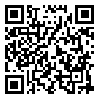BibTeX | RIS | EndNote | Medlars | ProCite | Reference Manager | RefWorks
Send citation to:
URL: http://bcn.iums.ac.ir/article-1-410-fa.html
During the past .. years, non-invasive .rain stimulation has .ecome an emerging .eld in clinical neuroscience due to its capability to transiently modulate corticospinal excitability, motor and cognitive functions. .hereas transcranial magnetic stimulation has .een used e.tensively since more than t.o decades ago as a potential .neuromodulator., transcranial current stimulation .tCS. has more recently gathered increased scienti.c interests. The primary aim of this narrative revie. is to descri.e characteristics of different tCS paradigms. tCS is an umbrella term for a number of brain modulating paradigms such as transcranial direct current stimulation .tDCS., transcranial alternative current stimulation .tACS., and transcranial random noise stimulation .tR.S.. Their ef.cacy is dependent on t.o current parameters: intensity and length of application. .nlike tACS and tR.S, tDCS is polarity dependent.These techniques could be used as stand-alone techniques or can be used to prime the effects of other movement trainings
The review also summarises safety issues, the mechanisms of tDCS-induced neuroplasticity, limitations of current state of knowledge in the literature, tool that could be used to understand brain plasticity effects in motor regions and tool that could be used to understand motor learning effects.
دریافت: 1392/5/19 | پذیرش: 1392/6/1 | انتشار: 1392/6/1
| بازنشر اطلاعات | |
 |
این مقاله تحت شرایط Creative Commons Attribution-NonCommercial 4.0 International License قابل بازنشر است. |



